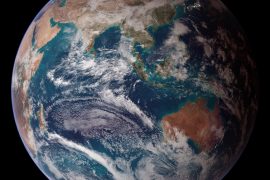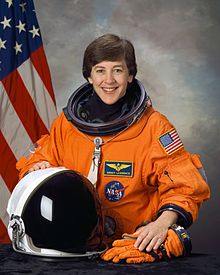Meet Wendy Lawrence, a real, live astronaut who has logged more than 1,225 hours in space. Cool, huh? From 1995 until 2005, Lawrence took four trips into space, including the last Shuttle-Mir docking mission on Discovery. She also took rides in Endeavor and Atlantis.
And, duh, she used lots and lots of math as an astronaut. She breaks it down below.
Can you explain what you do for a living?
As a NASA astronaut, first and foremost, your job is to support NASA’s human spaceflight program. For example, one of my jobs in the Astronaut Office was to oversee the training of astronauts who would spend five to six months on the International Space Station (ISS). In this job, I had to work closely with representatives of the other participating space agencies to determine the specific content and length of the training flow.
Certainly, the highlight of being an astronaut was having the opportunity to be assigned to a mission! I was very fortunate to have the opportunity to fly on the space shuttle four times. On my first flight, STS-67, we performed astronomical observations with the three telescopes that we had in the payload bay. My next two flights, STS-86 and 91, went to the Russian space station Mir. My last flight, STS-114, was the first shuttle flight after the Columbia accident and we went to the ISS.
When do you use basic math in your job?
Astronauts use math regularly. We often fly in the T-38 jet for crew coordination training and to travel to other locations for mission training and support. Before every landing, the crew (front seat pilot and back-seater) needs to calculate the landing speed. This requires basic addition, subtraction and division. We subtract 1000 from the current amount of fuel and then divide that number by 100. We then add the result to the basic landing speed (155 kts or knots). Here’s an example:
2000-1000 = 1000
1000 ÷ 100 = 10
Landing speed is 155 + 10 = 165 kts
We also have to use math when we fly the space station robotic arm. This arm was built by the Canadian space agency. They used centimeters to measure distances and centimeters are displayed on the control panel. When NASA astronauts ride on the arm during a spacewalk, they typically measure distances in inches and feet. For example, the space-walker may say that he or she needs to move 12 inches to the right. Knowing that there are 2.5 centimeters per inch, the robotic arm operators can make the conversion to 30 centimeters (typically done in our heads) and then fly the arm to that new location (based on the numbers displayed on the control panel).
Do you use any technology to help with this math?
Typically, we when fly in the T-38 jet or fly the station robotic arm, we don’t use calculators or computers to help us with this math. When your hands are on the controls of the jet or the robotic arm, it is hard to use a calculator!
How do you think math helps you do your job better?
When we fly the T-38, it is a matter of safety. We could quickly get ourselves into trouble if we don’t land the jet at the proper speed.
How comfortable with math do you feel?
I studied engineering in college, so I do feel very comfortable with math.
What kind of math did you take in high school?
I took geometry, algebra II, trig and pre-calculus in high school. I did enjoy math, but I did feel like I needed to work hard to be good at it.
Did you have to learn new skills in order to do the math you use in your job?
Basically, for the situations that I have already described, I could use the math skills that I learned in school.
No surprise that Wendy uses lots of math, right? But I was a little surprised that she used so much mental math. And I didn’t expect her to say that she had to work hard at math in high school. What surprised you? Share in the comments section.

